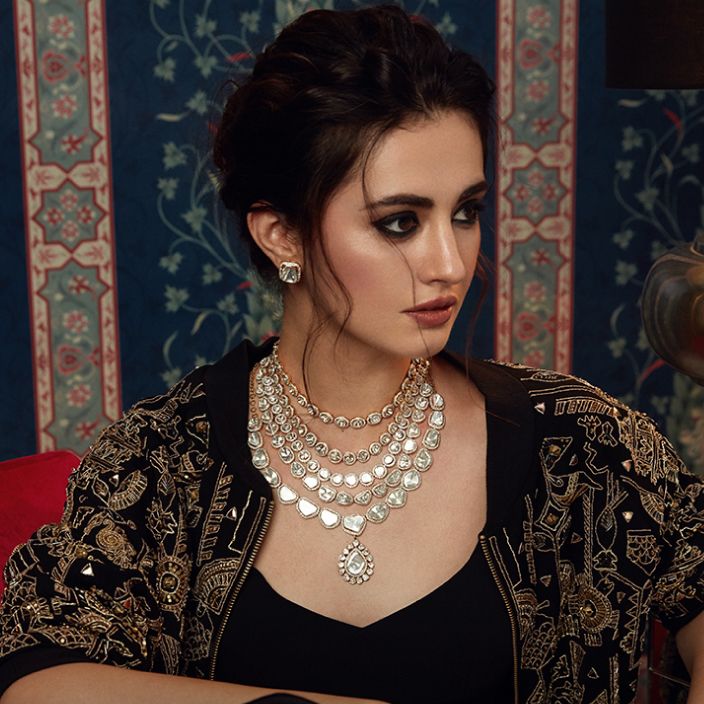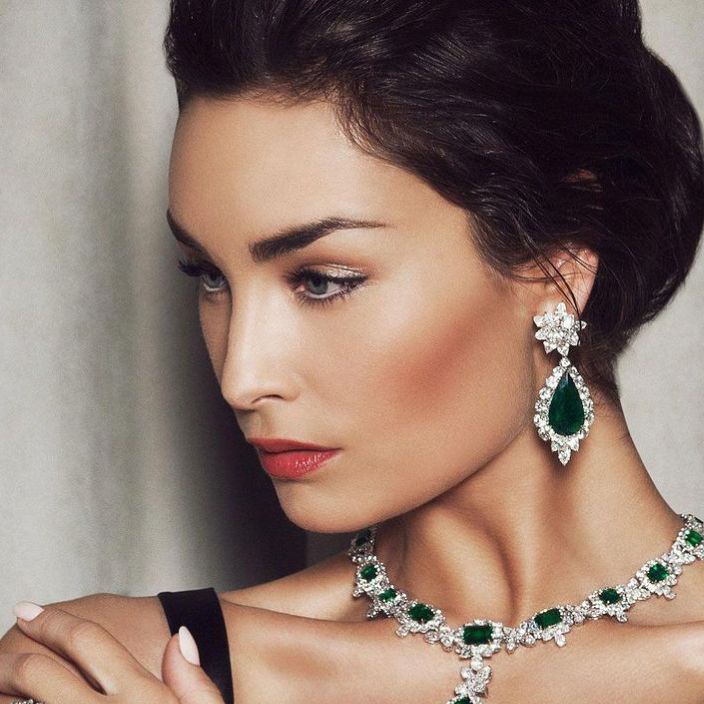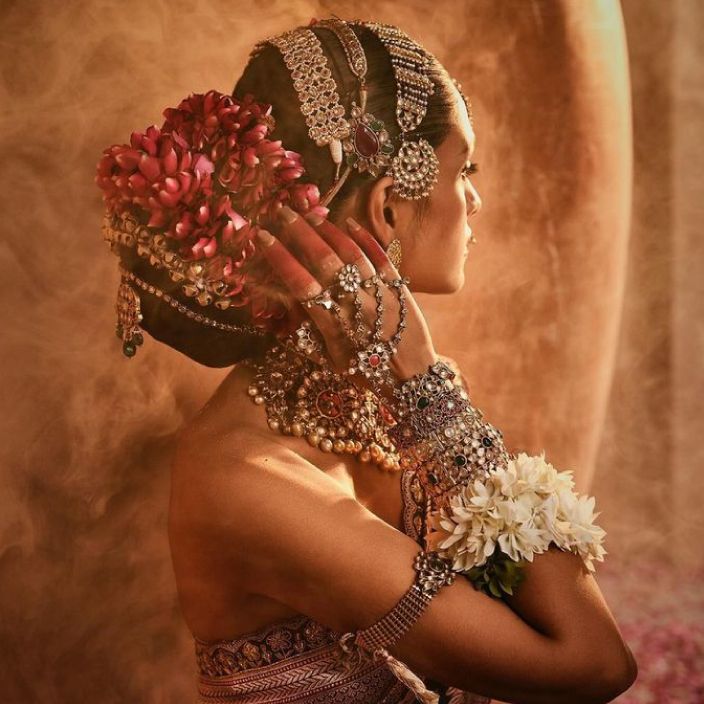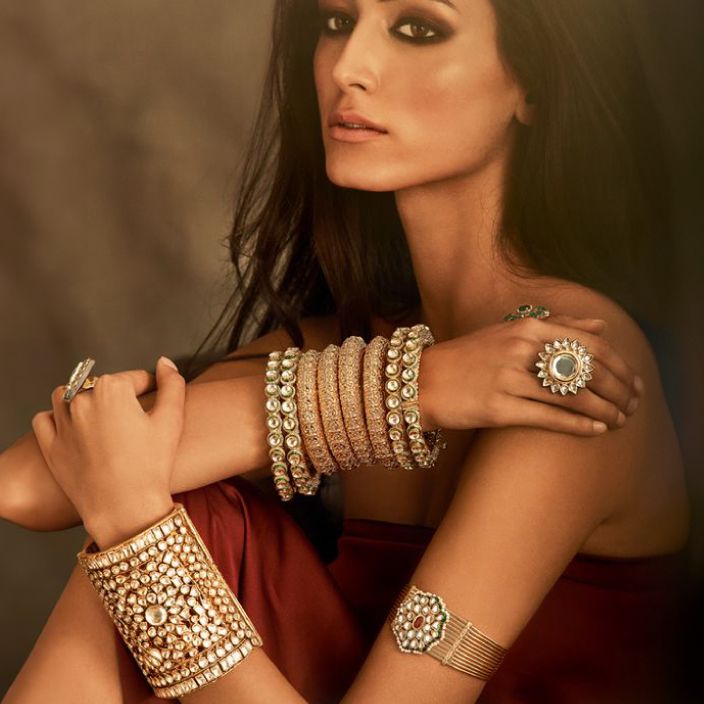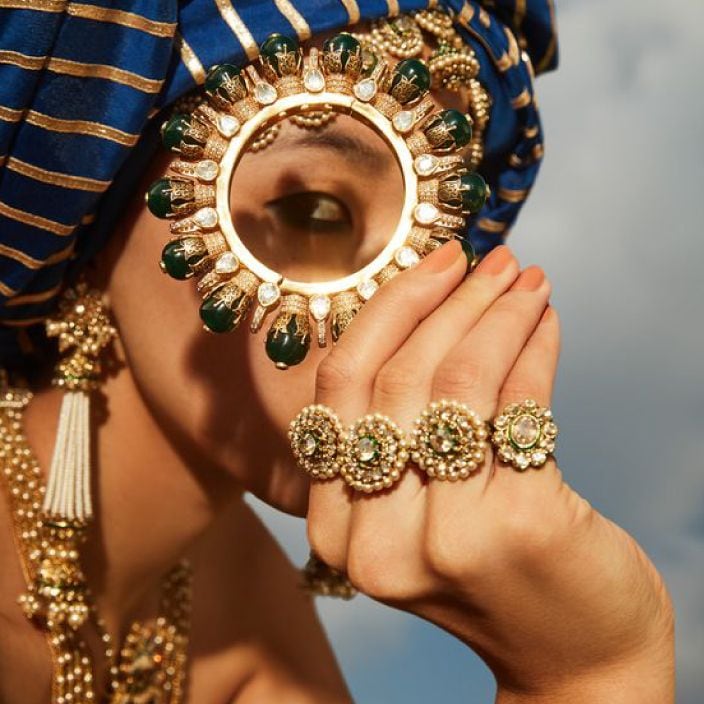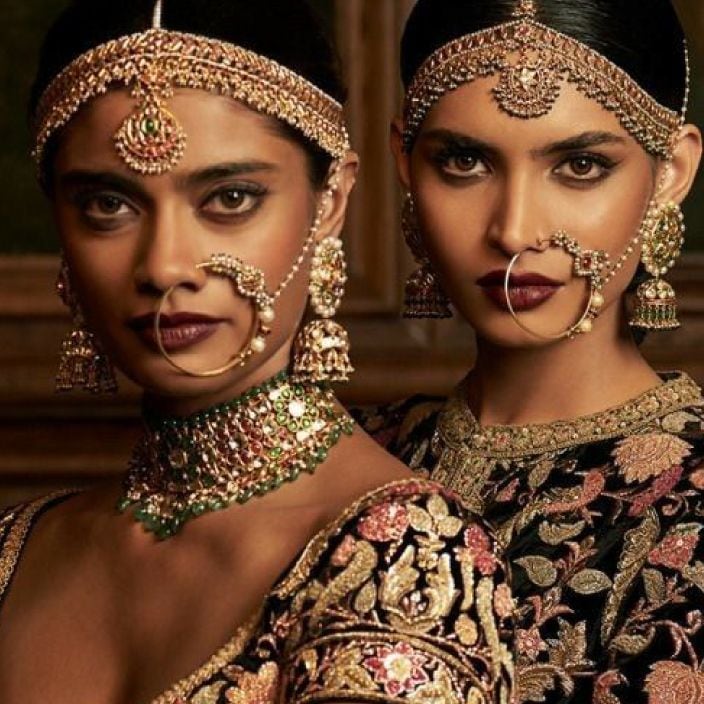For best prices and early deliveries, WhatsApp us at. 918488070070
Silver Jewellery
Spanning centuries and cultures, the meaning of silver jewellery lies in its ability to signify beauty, durability, and versatility, making it a noble metal and one of the oldest and most important metals used by mankind. Though traditionally classic gold and platinum remain a strong contender, the history of silver jewellery reveals its presence everywhere, from fashion ramps to Gen Z jewellery boxes. Also, silver jewellery has bejewelled everyone from the most beautiful women to idols of Gods and Goddesses.
Tracing the Roots
Silver (symbol Ag) is a white metal harder than gold, malleable, ductile, durable and resistant to oxidation. It was first mined at the end of the 4th millennium BC, in parts of Turkey and Greece, when miners discovered silver veins alongside copper deposits. During this period, called the Bronze Age, skilled metalsmiths began to create silver currencies for trade.
The ancient Egyptians discovered silver deposits in the eastern deserts of Egypt and Nubia. They used pure silver mixed with gold to make an alloy called electrum. Electrum was used extensively in jewellery, coins and to make ceremonial utensils. Also considered divine and eternal, electrum was used extensively in talismans to protect from evil in life and the afterlife.
By 100 AD, silver was being mined across other regions. Spanish silver mines began to serve the Roman Empire. In Spain and Rome, silver was used in coins and to decorate their crowns and tiaras. Kings, queens and royals believed wearing silver jewellery could alleviate pain and promote overall well-being.
From 1500 to 1600 AD, in the Renaissance period, silver was used to make elaborate costumes with intricate designs inspired by nature. Then, during the Baroque period, from around 1600 to 1700, an increasing amount of South American silver was finding its way to Europe. Everyone from the English, French and Dutch began to wear some form of silver jewellery, plain, engraved, or studded with precious stones. During the Georgian era of Great Britain from 1714 to 1837, setting diamonds in silver gained more acceptance. Diamonds from India were set in silver necklaces, pendants, earrings and rings, as they complimented the white colour of the diamonds. Also, fine jewellery crafted in gold had silver-topped front sides. By the end of the Victorian period, once America entered the market, the supply of silver jewellery grew across continents. In the 21st century, innovations and fashion trends contributed to the enormous demand for silver jewellery.
The history of Silver Jewellery in India dates far back to the Indus Valley Civilisation, where it became a part of their customs, traditions and beliefs. From Indus Valley Civilisation to Banjara tribal women and modern city belles, silver jewellery has served as India’s rich cultural heritage. While silver jewellery has played a significant role in different corners of the world, Indian women have also made a bold and stylish statement with their silver necklaces, chains, rings, earrings, bracelets and bangles. In some parts of India, women even wear silver nose rings and toe rings as a symbol of marital status. Whether plain or studded with semi-precious gemstones like amethyst, garnets, aquamarines, citrines, tourmalines and turquoise, every piece of silver jewellery is stunning. Furthermore, the craftsmanship and traditional techniques in silver jewellery designs have blossomed from delicate filigree and granulation artistry to globally appealing minimalist designs. Advanced machinery and computer-aided design (CAD) software have also made inroads in silver jewellery manufacturing, resulting in mass production at lower prices.
The Making of Silver Jewellery
Silver undergoes a massive transformative process, from mined silver ore to stunning silver jewellery. Silver ore deposits found alongside lead, zinc, or copper get extracted through open pit quarries or underground tunnelling, depending on how deep the ore is within the Earth’s surface. It is then filtered and processed into silver blocks.
The first step in making silver jewellery is to finalise a design. Whether a necklace, earring, or ring, the designer draws the design by hand. It is converted into a 3D render using CAD (Computer Aided Designs) software. The 3D image of the design is more detailed, giving the designer an idea of the final product and allowing a lesser scope of errors. Once the design is finalised, a 1:1 scale wax carving is prepared. In factories, the hand-skilled carvers use machines to carve intricate patterns and shapes into the wax based on the 3D design model.
The mould is made by placing the approved wax model into a container filled with plaster. It is superheated to burn off the wax and leave a detailed hollow impression of the wax model within the plaster. The mould is used as the base to prepare a silver master model. To start making 925 silver jewellery, 92.5% silver is mixed with 7.5% copper by heating silver to 960.5ºc (1760.9°F) and copper to 1093ºc (1999.4°F) and pouring the mixture into the mould. This silver mould can produce several rubber moulds to duplicate the design.
Once each piece is out of the mould, the silversmith cleans it, files it, and checks for flaws. Individual pieces in necklaces or bracelets are assembled using a silver alloy with a lower melting point. You have a secure silver ornament once all the pieces are effectively soldered. The silversmith then buffs and polishes the piece and sets the gemstones into sockets or channels. Finally, the designer and manufacturer sit together for quality control and pricing, ready to sell the finished product.
Cultural Significance
Silver jewellery has been integral to tribal communities like the Maasai people of Kenya and Tanzania, the Tuareg people of North Africa, the Navajo people of the American Southwest and the Hopi people of Arizona. In all these cultures, silver jewellery is believed to have spiritual significance and healing properties and thus used in religious ceremonies. Silver jewellery is also a way to honour their ancestors and preserve their cultural traditions.
In India, men and women wear silver jewellery to protect themselves from magic. In Hindu astrology, silver linked to Venus and the Moon, has healing abilities. Silver ornaments, silver idols and silver coins are offered to deities during temple poojas as an act of devotion and gratitude. Silver is also gifted at childbirth, naming ceremonies of babies, birthdays and weddings.
Evolution & Adaption
In many cultures, the use of silver is deep rooted. In ancient times, silver was used as currency and to make ceremonial utensils. By the end of the Victorian period, as the supply of silver increased, it became more affordable, leading to a higher demand for silver jewellery.
From ritual objects to silver jewellery, the noble metal has come a long way. Today, silver jewellery has become more versatile, popular, affordable, and a highly sought-after fashion accessory. It has embraced bespoke designs, global trends, technological advances, and sustainability.
